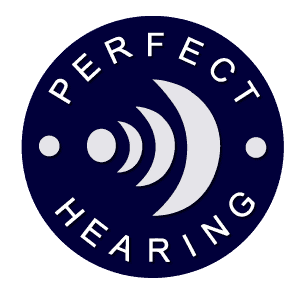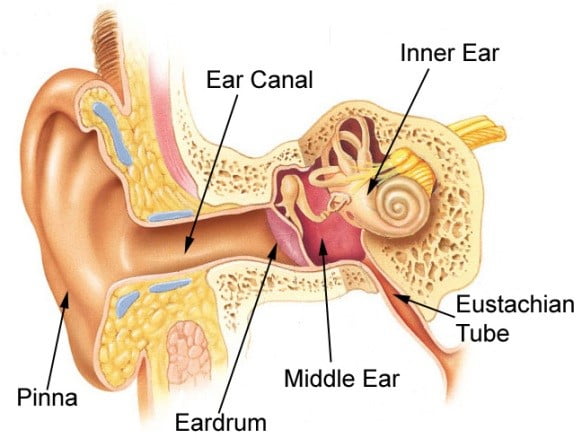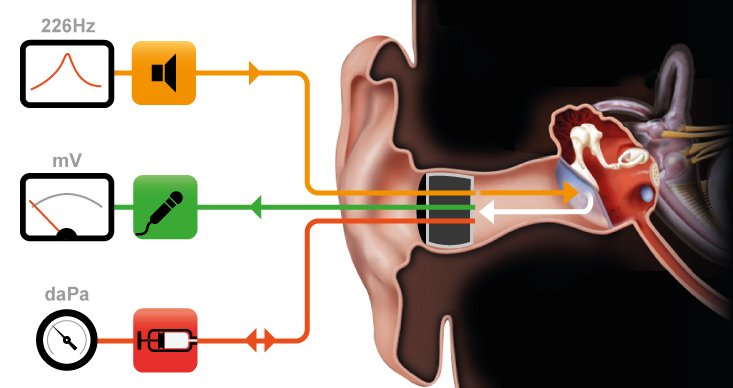Conductive hearing loss is a condition that makes it difficult for sound to reach your inner ear. The passage of sound is usually restricted either in the ear canal or middle ear.
The obstruction of sound in those parts of the ear may be due to blockages or damaged anatomical structures in the outer ear, canal, or middle ear.
The blockage or damage reduces the sound levels on its way to the cochlea in the inner ear. Hence, the loss of hearing.
Conductive hearing loss is usually temporary and subsides after treatment, and may not require hearing aids. However, your ENT doctor in Malaysia will be in the position to recommend the best treatment path.
Causes of Conductive Hearing Loss
Conductive hearing loss can be attributed to the following:
- A build-up of fluid in your middle ear due to colds or allergies
- Ear infection or otitis media
- Hole in the eardrum
- Benign tumours: when benign tumours grow, they can block the outer or middle ear
- A build-up of earwax or cerumen in the ear canal
- External otitis: An infection in the external ear
- An object stuck in the outer ear. This occurs especially among kids. When they get a pebble, or something else stuck in their ears when playing outside
- Wrong formation of the outer ear. Some people are born without an outer ear. Others can be a deformation of the ear canal or problems with the bones in the middle ear
- Poor functioning of the Eustachian tube. Fluid in the middle ear can quickly drain out via the Eustachian tube, but if the tube doesn’t function properly, the fluid begins to build up in the middle ear
Common Symptoms of Conductive Hearing Loss
This hearing condition may be lurking when you notice that sounds that you usually hear are reduced, and discussions with everyone are becoming more strenuous.
People who display this symptom typically describe how they hear as “hearing through cotton wool.” They feel as if they are wearing earplugs. If you have these symptoms, don’t wait, visit an ENT specialist as soon as you can.
Diagnosing Conductive Hearing Loss
When visiting an ENT specialist, the following methods may be adopted to diagnose conductive hearing loss.
- Otoscopy
- Weber test
- Rinne test
- Tympanogram
Otoscopy
An otoscopy is done using an otoscope. It is a medical device used to check if your eardrum is injured. It is also used to detect foreign bodies in the canal and middle ear effusion.
Weber Test
During this test, a tuning fork is struck and kept on the crown of the head. If your hearing is normal, you should be able to receive the sound equally on both ears. But if you have conductive hearing loss, the sound will be received only on one ear.
Rinne Test
A tuning fork is also struck during the Rinne test, but placed on the mastoid bone behind the ear. Next, the patient will signal when he stops hearing the tone. The fork will then be moved near the ear canal, and the patient will signal again when he can no longer hear the tone.
If your hearing is normal, the mastoid bone conduction sound will be heard for half the amount of time as the second sound. But if you have conductive hearing loss, the mastoid bone conduction sound will be heard for a more extended or equal amount of time than the second sound.
Tympanometry
This test is done to measure the mobility of the eardrum. If the middle ear has the same pressure as the external ear, the eardrum will oscillate normally. If there’s a pressure difference, the oscillation behaviour and sound condition will change.
The examination helps to determine if there’s increased or reduced pressure in the tympanic cavity. Tympanometry is useful in localizing the cause of conductive hearing loss.
For more information, visit Perfect Hearing and talk to our ENT specialists to identify the cause and recommend the best treatment option to follow. Our clinics are situated all around Malaysia, including Johor Bahru and Melaka.
In a Nutshell
Finally, treating conductive hearing loss may be complicated or straightforward, depending on the cause of the condition. Impairment caused by earwax can be easily fixed manually. Poor ventilation in the Eustachian tube can also be treated easily using medication like a decongestant nasal spray.
However, if the hearing loss is due to secretory otitis media, paracentesis may be required. Paracentesis involves puncturing (usually a small incision) the eardrum to allow fluid to drain. The small incision will heal by itself after some time.



